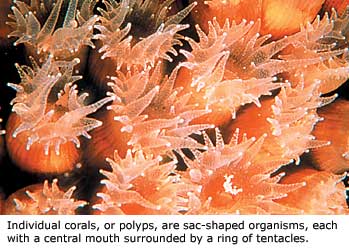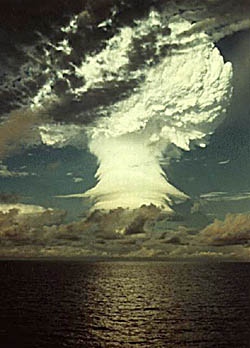

Corals hold a rather unique place in the field of biology. They are not able to grow at depths below 120 feet, yet coral reefs are found at much lower depths.
Coral Atoll


One explanation was proposed by Charles Darwin in his book "The Structure and Distribution of Coral Reefs" first published in 1842. According to Darwin the process works like this. A volcanoe erupts creating a volcanis island. Coral then grows along the edges of the island. The island would start to subside and the coral would grow up eventually forming a barrier reef around the island (see above). Eventually, the island would disappear entirely, leaving an atoll. Using this hypothesis Darwin was able to explain the grouping and distribution of coral reefs around the world.
Darwin


The hypothesis remained untested until 1896 when the Royal Society did test boring on Funifuti Atoll. Unfortunately, the results were inconclusive. Eventually, the hypothesis was tested on three atolls and one coral island. Using test boring and seismic techniques to determine the thickness of layers of coral and volcanic basalt it was demonstrated the subsidence predominated on those atolls for a period of 10 million years or so. It was also shown that the volcanic islands had caps of coral thousands of feet thick - thus proving Darwin right. Not too long after that, another hypothesis was tested on one of the atolls (Eniwetok) a hypothesis that shook the world.
Eniwetok










